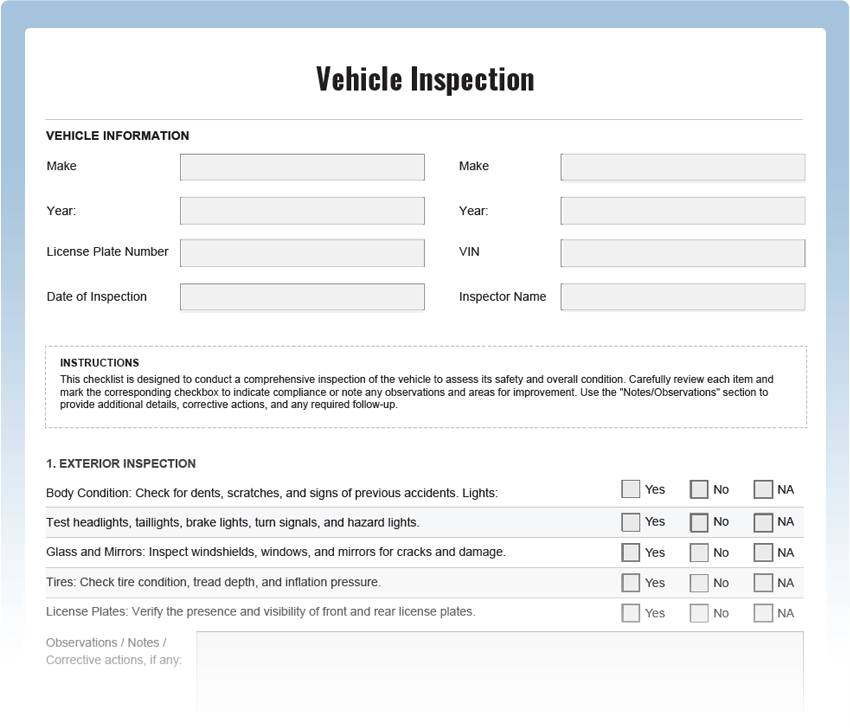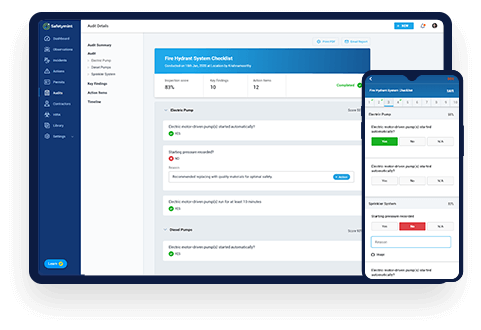Vehicle Inspection Checklist
Ensure the safety and reliability of your vehicles with our comprehensive Vehicle Inspection Checklist. This free PDF template covers all critical aspects of vehicle safety, maintenance, and compliance, empowering you to conduct thorough inspections and address potential issues promptly.
Digitize this Checklist on Safetymint
- Create unlimited, customized checklists
- Add Actions, with automated reminders
- Works seamlessly with or without internet
- Access via web browsers, mobile or tablets

What is a Vehicle Inspection Checklist?
A Vehicle Inspection Checklist is a systematic tool used to assess the condition and safety of vehicles. It includes a series of checkpoints designed to inspect various components, systems, and safety features of the vehicle. Regular vehicle inspections are essential for identifying potential problems, ensuring roadworthiness, and promoting safe driving practices.
Key Areas to Inspect in Vehicles:
- Exterior Inspection: Check for any visible damage, dents, scratches, or signs of wear on the vehicle’s exterior.
- Tire Condition: Inspect tire tread depth, tire pressure, and overall tire condition.
- Braking System: Test the brakes for effectiveness and responsiveness.
- Lights and Signals: Ensure all lights, indicators, and signals are functioning correctly.
- Fluid Levels: Check engine oil, coolant, brake fluid, and other fluid levels.
- Steering and Suspension: Assess the steering and suspension systems for smooth operation.
- Seatbelts and Safety Features: Verify the functionality of seatbelts and other safety features.
- Documentation: Review vehicle documents, including registration, insurance, and maintenance records.
Common Vehicle Inspection Findings:
Frequent issues found during vehicle inspections include:
- Worn Tires: Tires with inadequate tread depth or uneven wear.
- Brake Wear: Brake pads or discs that require replacement.
- Burned-out Lights: Non-functional headlights, taillights, or indicators.
- Low Fluid Levels: Insufficient engine oil, coolant, or brake fluid levels.
- Damaged Windshield: Cracks or chips in the windshield affecting visibility.
Vehicle Inspection Best Practices:
- Regular Inspections: Conduct routine vehicle inspections according to a predetermined schedule.
- Trained Inspectors: Ensure that inspectors are trained in vehicle inspection procedures and safety standards.
- Preventive Maintenance: Implement a preventive maintenance program for vehicles.
- Prompt Repairs: Address any identified issues promptly and perform necessary repairs.
- Driver Education: Educate drivers about vehicle safety and the importance of reporting issues.




